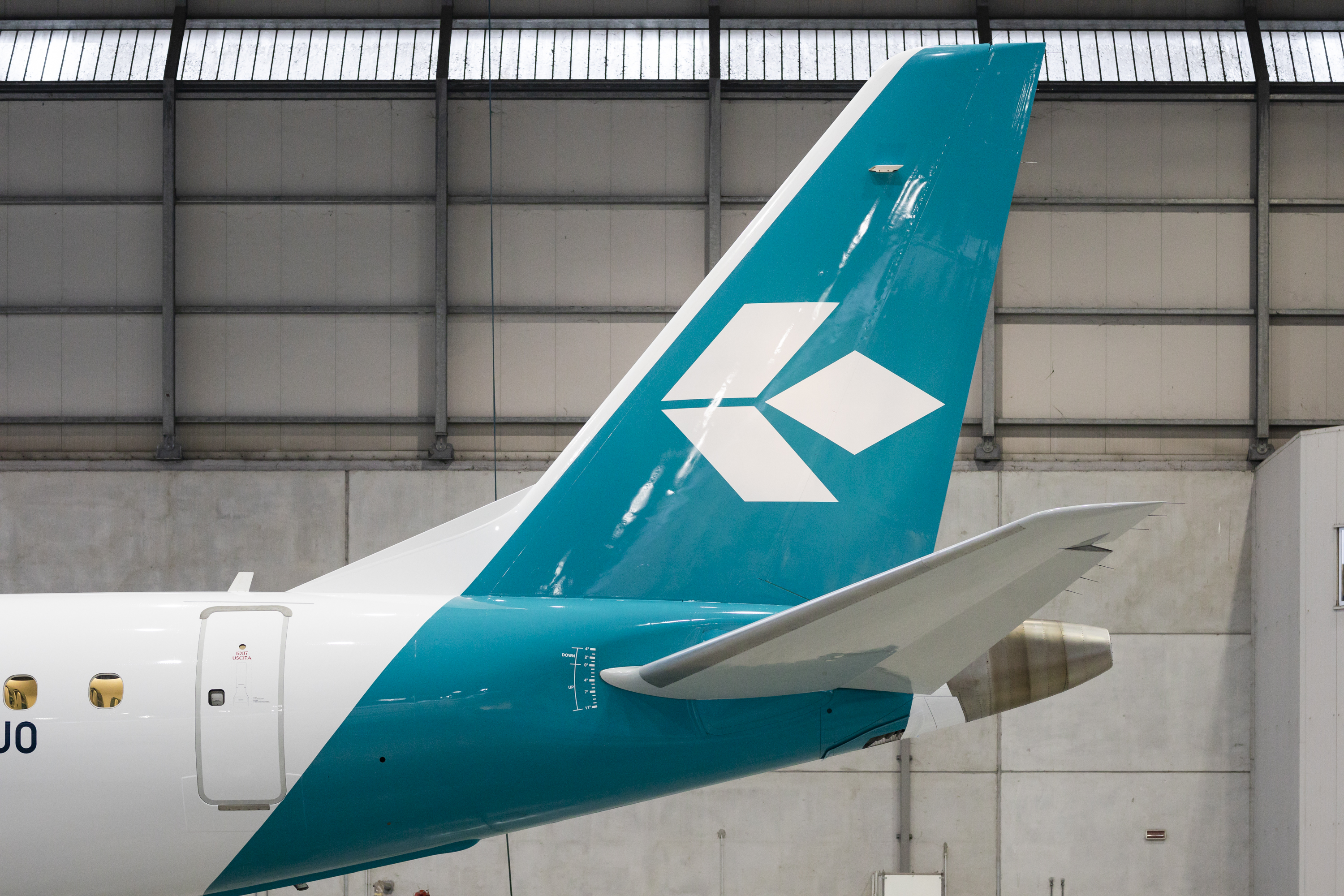Last but not least on an aeroplane comes the tail, also known as the empennage. A fundamental part of an aeroplane, the tail is structured in both horizontal and vertical planes, the ratio of which changes according to the aeroplane configuration. For example, there are T-tails, V-tails and classic tails, which are the most common.
For the sake of simplicity, in this article we’ll take a detailed look at the structure and function of a classic tail, which is the one our Embraers have.
The ‘classic’ aeroplane tail
Aeroplane tails have two sections: a vertical section and a horizontal one.
The vertical section of the tail has two parts: the fin and the rudder. The fin is similar to the dorsal fin of a big fish and it ensures directional stability, whereas the rudder is operated by the pilots to control the yaw i.e. the rotation motion of the aeroplane around its vertical axis.
The horizontal section of the tail comprises two parts, one of which is fixed and called a stabiliser, whilst the other is mobile and is called an elevator. Unlike on the wings, the horizontal plane of the tail is a surface that exerts downforce. It’s involved in generating the necessary force to lift the aeroplane from the ground, creating a downward force. This latter balances the upward lift of the wings and the downward weight of the aircraft, as the different points of application of weight and lift would cause the aeroplane to turn nose down (if you need a refresher on the concept of lift, check out this article!
The stabilisers are like miniature wings (may the more orthodox AvGeeks forgive us for this comparison) located at the end of the fuselage. They work as a base for the elevators, the part of the empennage which probably plays the most important role.
Through oscillation, the elevators control the pitch, i.e. the rotation of the aircraft in the horizontal plane.
For a recap on what we’ve said, take a look at the tail of one of the aeroplanes in our fleet: the new livery allows you to immediately distinguish the turquoise vertical plane from the horizontal one, which is sparkly white!
Ad astra (to the stars)!




